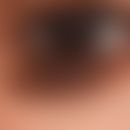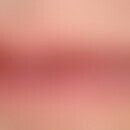Synonym(s)
DefinitionThis section has been translated automatically.
Hypotrichosis hereditaria simplex is a clinically and genetically heterogeneous disease. Both an autosomal recessive and an autosomal dominant mode of inheritance of reduced hair growth have been described.
EtiopathogenesisThis section has been translated automatically.
For the autosomal dominant form which is limited to the hairy head (HSS of the scalp) a mutation in the corneodesmosin gene (CDSN) could be detected. It has been described in 4 different families (Betz RC 2014).
Another mutation, in the same phenotype, affects the APCDD1 gene, a gene located on chromosome 18p11. APCDD1 (adenomatosis polyposis down-regulated 1) is a glycoprotein with strong expression in the hair follicle and suppresses functions in the Wnt pathway (Wnt-is composed of Wg for Wingless and Int-1. The term Wingless-type comes from observations with the fruit fly Drosophila melanogaster, in which mutations in the wingless gene lead to a wingless variant of the flies. Int-1 designates the Int gene that can induce the development of breast cancer in mice).
Several genes have been identified in recent years for autosomal recessive forms of HS.
These include:
DSG4 gene (desmoglein4) on chromosome 18q12,
Lipase H gene (LIPH) on chromosome 3q27,
and the gene for the G protein-coupled receptor p2y5 (LPAR6) on chromosome 13q14-q21 (Betz RC 2014).
You might also be interested in
ClinicThis section has been translated automatically.
The hair in hypotrichoses is usually normally developed normally at birth and in the first years of life. Depending on the variant, gradual diffuse hair loss is evident from infancy. This is progressive and leads to a complete loss of hair by the end of the 2nd decade of life.
The remaining body hair, eyebrows, eyelashes and beard hair can remain unchanged or be affected.
Differential diagnosisThis section has been translated automatically.
Hypotrichosis caused by structural defects of the hair shaft (e.g. Monilethrix); defect syndromes in which hypotrichosis is a diagnostic leading symptom, e.g. ectodermal dysplasia.
TherapyThis section has been translated automatically.
No causal therapy possible.
LiteratureThis section has been translated automatically.
- Cichon S et al (1998) Cloning, genomic organization, alternative transcripts and mutational analysis of the gene responsible for autosomal recessive universal congenital alopecia. Hum Mol Genet 7: 1671-1679
- Betz RC (2014) Alopecia and hyoptrichosis in children. dermatologist 56: 520-526
Disclaimer
Please ask your physician for a reliable diagnosis. This website is only meant as a reference.




